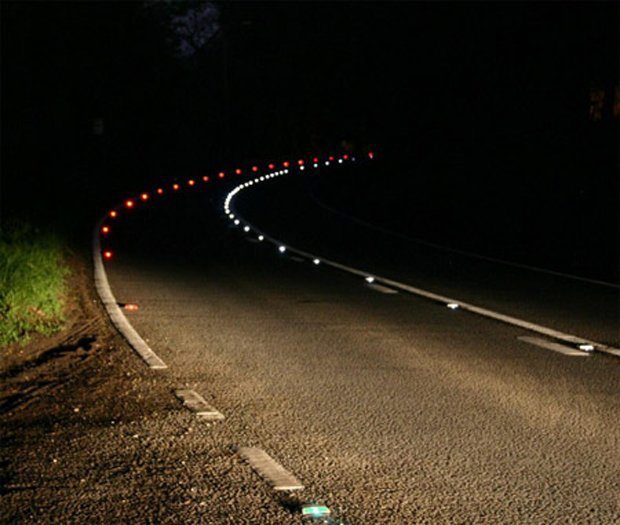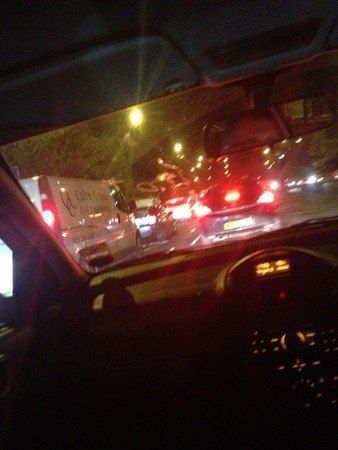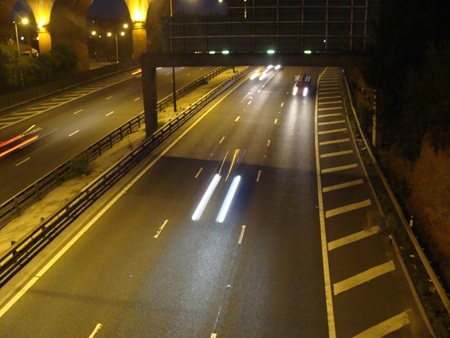
Apart from those drivers with young children, we will have enjoyed an extra hour's sleep on Saturday night/Sunday morning as the clocks went back from British Summer Time, heralding the arrival of winter driving as days get shorter and nights get darker earlier. And this driving in the dark can be a shock at first for drivers who haven't done it for a good while.
 IAM RoadSmart’s head of driving and riding standards, Richard Gladman, offers up some thoughts for consideration before you set out to encounter 'the dark side'.
IAM RoadSmart’s head of driving and riding standards, Richard Gladman, offers up some thoughts for consideration before you set out to encounter 'the dark side'.
- Be aware that those all-too-familiar routes can look a lot different in the dark, and that darkness poses a whole new set of challenges to a car driver - including encounters with both pedestrians and cyclists in the gathering gloom. They also have these challenges to face, but then they aren't behind the wheel of a great big metal box, are they?
- Make sure that you are wide awake before driving, especially in the morning; but be aware that driving the dark is tiring on the eyes at the best of times, let alone after a hard day's work.
- Check your car lights daily. They are an important part of your car safety. Make sure that all of them work to full capacity and how they are supposed to, including the rear lights. With these, get someone to check them with you, or test them against a wall or garage door. If you are in doubt, or indeed, in no doubt, as to the condition of bulbs, get them changed at a garage or bulb supplier, before a police car makes you change them - and that's a lot more expensive!
- Get your own eyes tested. It is important to get them checked regularly anyway, but night vision is heavily affected as eyes age, so it makes senses, howver fit you purport to be, to get them done anyway.
- Be aware of the power of the headlights, especially LED ones. One of the "biggest night-time hazards is the dazzle affect caused by the bright light from on-coming motors", so dip your headlight when you meet other vehicles. It is also important to be aware of the effects of your headlights on on-coming cars when you drive a high-seated vehicle such as an SUV!
- Carry a basic emergency kit with at least a tool kit, torch, map and a first aid kit, because anything can happen at night and it is important to be prepared. Make sure that your mobile phone is fully charged, and has the number of your breakdown cover in it already.
Richard says: "Per mile driven the risk of a crash is actually higher at night despite the quieter roads. Getting used to night-time driving can take time, so take it easy until the old skills come back and you can start to enjoy the new challenges."
Is it time to end British Summer Time?
Family safety charity RoSPA thinks so.
British Summer Time (BST) was introduced during the First World War in May 1916 in response to the German, decision to take the same step to make the most of daylight hours, and has continued every year since then, save a short period during the Second World War and an experiment between 1968 and 1971, during which year-round BST was trialled, actually saving around 2,500 deaths and serious injuries each year of the trial period.
 But 100 years on from its introduction, it still continues, and the RoSPA is once again calling for it to be abolished as they believe it "has now been made obsolete through changing technology, working practices, tourist habits and other factors."
But 100 years on from its introduction, it still continues, and the RoSPA is once again calling for it to be abolished as they believe it "has now been made obsolete through changing technology, working practices, tourist habits and other factors."
IT's very dangerous for vulnerable road users like pedestrians, children, the elderly, cyclists and motorcyclists, with rod casualties rising every autumn when the clocks go back and the sunset occurs earlier in the day.
In 2015, pedestrian deaths rose from 27 in September to 42 in October, 45 in November and 58 in December, so the RoSPA is calling for a change from the current regime of GMT in the winter and GMT+1 in the summer, to Single/Double Summer Time (SDST), which would move the clock forward to GMT+1 in the winter, and GMT+2 in the summer as this would increase evening sunlight year-round.
Kevin Clinton, RoSPA’s head of road safety, said: “Child pedestrians are particularly vulnerable during the afternoon school run, when they digress on their way home and so are exposed to traffic risk for longer than their morning trip to school. During that period motorists are also tired after the day’s work, concentration levels are low, and journey times are increased due to shopping and social trips. For these reasons, increased evening daylight would produce significant results in preventing accidents to children and other road users.”
It would mean going to school and work "in the dark", but figures suggest that more accidents occur later in the day when drivers have already experienced a hard day rather than a night's sleep, and when children dawdle after school rather than going straight in.
And RoSPA chief executive Tom Mullarkey offers up other benefits: "Not only would we save a significant number of lives through a change to SDST, but we would also boost the tourism industry, increase recreational time for children through sports and other activity, allow older people to reduce the winter evening curfew, lower opportunistic crime, and decrease CO2 production and fuel costs, all in one fell swoop. It is the only way we can make so many material improvements to our country, at a stroke, at no cost."
You can see more thoughts on the RoSPA suggestions here and here, but let's leave the last word to Mr Mullarkey, who uses a fine metaphor to make his point:
"Unfortunately there are those who are determined to cling onto a practice which was innovative and forward-looking in 1916 but which has not been updated to its full potential a hundred years later. In these conditions of economic uncertainty and austerity, this simple measure would raise everyone’s morale and set us up to deal with whatever troubles may lie ahead. We need our politicians to show the leadership and foresight of their wartime forbears, in our darkest hour."
Whatever the time, whatever the road conditions, and whatever the light , drive carefully, with thought and consideration for other road users.

